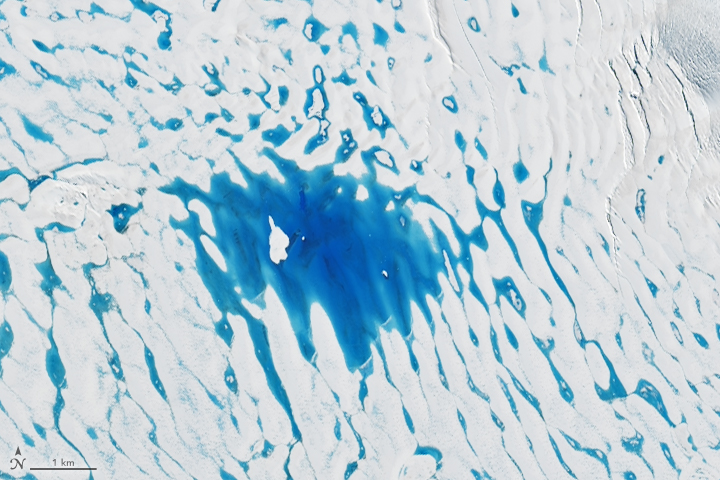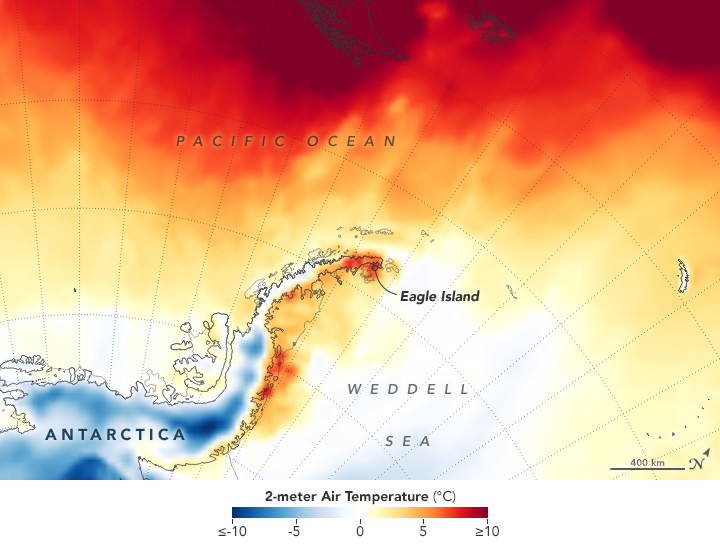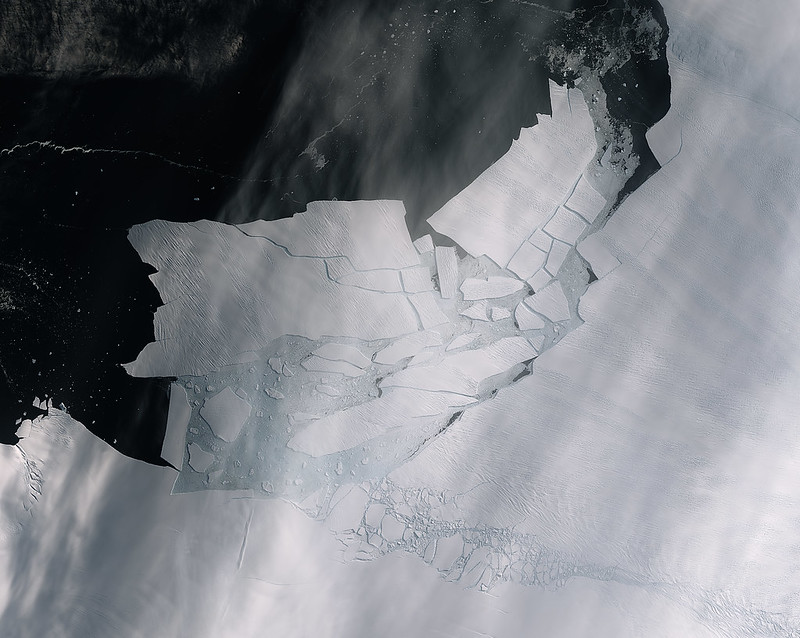Environment & Energy
Related: About this forumAntarctic Summer 2019-20 - Alarming On Multiple Levels In Duration, Speed & Scale Of Melting
EDIT
Unprecedented Melting
Things got worse in November. As the austral summer approached, news of West Antarctica’s dramatic melting of snow and ice trickled northward to the rest of the world. By December melt rates were estimated at a whopping 230% above average. It was the beginning of a summer of widespread melting.
The Belgian scientists who first reported the development used climate models to estimate melt rates, but satellite images revealed direct effects of melting two months later. Analysis by scientists at NASA and the University of Colorado showed widespread pooling of meltwater on the surface of the George VI Ice Sheet in West Antarctica. Such pooling is a marker of rapid melting that is ordinarily more common in the comparatively warmer climates of Alaska and Greenland.

Jewel-toned ponds of meltwater on the George VI ice shelf. NASA Earth Observatory image by Lauren Dauphin, using Landsat data from the U.S. Geological Survey.
Alison Banwell, a glaciologist at the University of Colorado Boulder who studies Antarctic ice shelves, says the lakes were larger in size and number than anything seen over the past 20 years. “They were also present almost continuously from December to March,” she says. “It’s the longest duration we’ve seen in recent history.” Banwell, whose work ranges from analyzing satellite data to wading into Antarctic melt pools to install monitoring instruments, says early indications suggest the George VI region may have experienced the warmest air temperatures in two decades of observation, though she cautions that analysis is not yet complete.
EDIT
A Warm Wind Blows, the Cracks Begin
News from the Thwaites Glacier was soon followed by the February “heatwave.” The record-breaking temperatures, which scientists called “incredible and abnormal,” occurred on February 6 and 9, when the air at two West Antarctica locations reached nearly 70 degrees Fahrenheit — far above the more typical high of 50 degrees and all-time records for the entire continent. The overheated air helped melt an estimated 20% of the region’s seasonal snow accumulation in just six days.

Antarctica heatwave. NASA Earth Observatory image by Joshua Stevens, using Landsat data from the U.S. Geological Survey and GEOS-5 data from the Global Modeling and Assimilation Office at NASA GSFC.
Gilbert, the climate scientist with the British Antarctic Survey, attributed the heat to a “perfect storm” of meteorological conditions, where high pressure over South America pushed warm air over the Antarctic Peninsula, creating optimal conditions for dry, warm “foehn winds” to roll down local mountains and produce rapid temperature increases. But Gilbert, who wrote about the heat in Britain’s Independent newspaper, says this occurred against a backdrop of ongoing Antarctic climate change. “In the simplest sense,” she tells us by email, “if you’re starting from a warmer baseline, then any additional warming on top of that — due to foehn winds, or any other phenomenon — will push temperatures higher.”
Additionally, evidence in recent years suggests global climate change is increasing both foehn winds and the influence that warm air over South America has on West Antarctica. Just as the soaring temperatures attracted international attention, satellite imagery on February 9 showed a 300-square-kilometer iceberg break away from the Pine Island Glacier.

The Pine Island Glacier recently spawned an iceberg over 300 sq km that very quickly shattered into pieces. Photo: Copernicus Sentinel data (2020), processed by European Space Agency, CC BY-SA 3.0 IGO
The glacier, like the nearby Thwaites, prevents the West Antarctic Ice Sheet from flowing into the ocean. It has been deteriorating for decades, but with increasing speed. The giant berg sheared off along cracks scientists first observed close to a year ago, which they attribute to warming oceans. “Warmer [ocean] waters are pushed more strongly toward Antarctica,” says Eric Rignot, professor of earth system science at the University of California, Irvine, who communicated by email. Rignot has studied Antarctic glaciers for 30 years and ties the warmer waters to changing wind patterns associated in part with a warming atmosphere.
EDIT
https://therevelator.org/antarctica-melting/